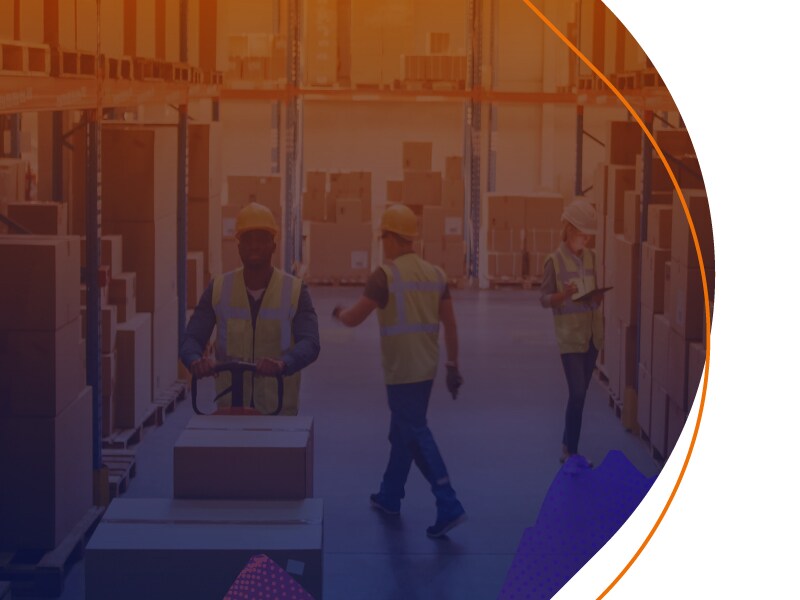Home > AssistEdge > Blogs > Automation Singularity —The Robots Are Here to Stay. But the Humans Aren’t Leaving.
Automation Singularity —The Robots Are Here to Stay. But the Humans Aren’t Leaving.

All of us who have focused our attention on the technology evolution in business in the last few decades can think back to when companies had a clear delineation between the ‘business’ and ‘IT’. Traditional business lines ran aspects of the company and leveraged technology provided and supported by their counterparts in the IT department. When engaging with a new company on something new, the common question that always sprang up was, “Is this being driven by the business, or IT”?
Of course, today lines of responsibility have blurred. Companies realize that their fundamental strategies and go-to-market plans are highly depending on their available technology. Technology decisions are rarely made without involvement from the business. Most companies have employees in roles that jointly represent one aspect of the business and the IT department.
There’s a similar phenomenon happening with Automation. As Robotic Process Automation (RPA) continues its rapid-paced transformation of business, the strict delineation of responsibilities between human workers and robots is becoming blurred. Particularly with the advancement of ‘Intelligent Automation’ and smart robots, the role of the digital worker and the human worker are becoming more intertwined.
This interconnectedness between the human and digital worker is known as ‘Automation Singularity’.
What is Automation Singularity?
Automation Singularity refers to a highly customer-centric and agile oriented state of constant improvement and optimization through the future workforce, opening up an expanded horizon of possibilities. Human specialists drive customer orientation using their creativity and empathy and are complemented by digital workers with extreme productivity and consistency.
Here are some of the specific ways that humans and robots are interacting in the age of Automation Singularity.
Strategic Priorities and Centers of Excellence (CoE)
Business is run top-down. Even the most mundane and repetitive business process (including the types often first automated with RPA), should ultimately align with higher-level company strategies and objectives.
Robots will continue to get ‘smarter’, but humans will ultimately always drive company strategy. RPA tends to focus on building automation road maps for processes that are 1) feasible for automation and 2) drive ROI. However, it will be necessary for companies to have Automation Centers of Excellence (CoE) that ensure the automation roadmap aligns with fundamental company strategies, and that strategic importance is a considering in building automation roadmaps.
Process Discovery
The first step in automation focuses on breaking down a process to prepare it for digital workers. This process discovery phase tends to be a human-driven activity. Subject Matter Experts gather with CoE members and use a whiteboard to map out processes as a basis for robot configuration.
Today, RPA technology actually can (and should) help with process discovery. Allowing your RPA platform to leverage tools to monitor a process over time, then auto-create process maps with statistics can improve the chance for automation success. Process discovery is quickly becoming a human + robot activity, and for the better.
Attended Automation
Despite giant leaps in RPA capabilities, including Intelligent Automation where robots learn and improve with time, some processes are still best performed when a human is involved.
For example, think Customer Service personnel at companies who still want to provide a human interface in their call centers. Robots can significantly improve the productivity and effectiveness of CSRs by providing automation in common and often complicated functions. The human + robot “Singularity” in a call center can provide the best overall experience for the customers it services.
Orchestration
One of the key advantages of digital workers is that they have the capability of achieving 100% accuracy and high levels of productivity. But they also need managing, unlike a popular misconception. While working, robots need direction just like humans, on what to work on, what to do when idle, and how to handle exceptions or problems.
Countless labor management tools have been built to orchestrate humans in working environments (in a warehouse, store, office, etc.). RPA platforms require similar technology to orchestrate robots, and ensure that they are maximized across processes, to deal with exceptions efficiently.
The exciting thing here is that a lot of digital worker orchestration can be automated in itself. We’ve reached a stage where digital workers are being ‘Singularly’ orchestrated by humans + robots.
Trust
Automation is creating a huge transition in work, from humans to robots. This requires a concurrent shift in ‘trust’. The risk management element of RPA is critical as it pertains to security and fraud, which again requires human oversight of digital worker activity and trust.
Automation Singularity thus involves synchronization of governance across humans and robots.
Training and Re-Skilling
There’s a common misconception that successful Automation initiatives manifest value by the replacement or elimination of human workers. Companies having the most success with RPA are getting results with something very different.
The emerging Automation Singularity phase shows us that RPA can maximize the productivity, scalability, and flexibility of both human workers and digital workers. Human workers are optimized and enhanced by robots. Humans can focus on higher-value elements of the business, like customer service and R&D.
This requires a shift in human worker focus, including training to re-skill human workers for their new roles. Successful automation (with robots) generates the most value when humans are optimized through training and re-skilling.
Conclusion — The journey towards Automation Singularity
The impact of automation and digital workers is altering the face of the business landscape forever. Companies on this journey will be completely successful if they build their plans not only around technology but also by focusing on both their human and digital workers. The age of ‘Automation Singularly’ is demonstrating right now that humans and robots can work together seamlessly to co-create the future.


Glenn VanLandingham
Vice President & Global Head – Solution Consulting, EdgeVerve
LinkedIn
More blogs from Glenn VanLandingham >